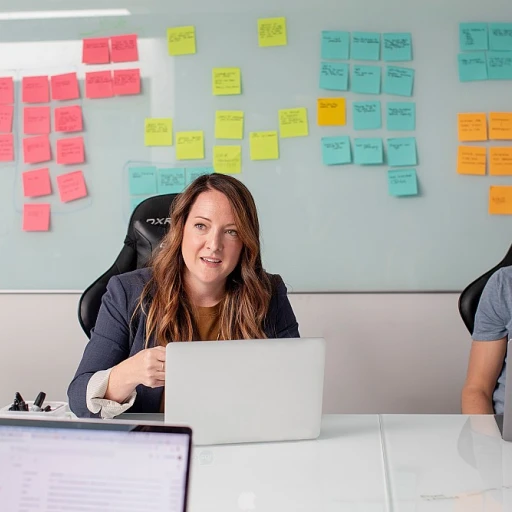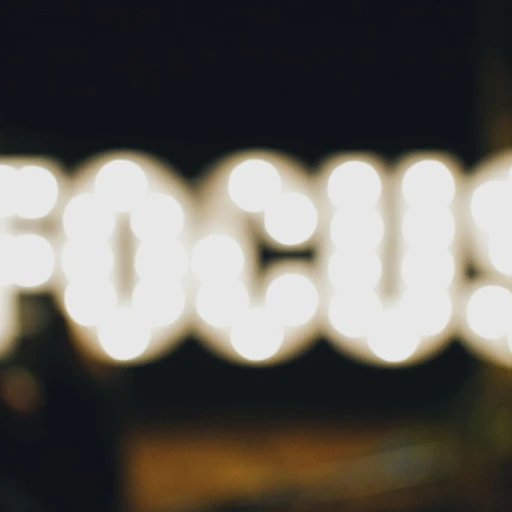Understanding the Skills Gap
Defining the Skills Gap
In today's fast-evolving job market, understanding the skills gap is crucial for both employers and job seekers. The skills gap refers to the difference between the skills that employers need and the skills that candidates actually possess. This gap can pose significant challenges during the hiring process, affecting the ability of teams to function effectively.
Companies often find themselves struggling to find candidates with the right skill set. This discrepancy isn't just about technical abilities but includes soft skills like communication, problem-solving, and teamwork as well. Assessing these skills accurately during the interview process is essential for hiring managers to make informed hiring decisions.
It's worth exploring the
most challenging types of employees to gain insight into potential skills gaps. Identifying these challenges early on in a candidate's profile can be a game-changer during reference checks and streamlining the hiring process.
Impact on the Workforce
The skills gap can have profound effects on the workforce. It can slow down productivity, create imbalances in work distribution, and even lead to increased turnover if employees are overwhelmed by skill mismatches. On the other hand, closing this gap effectively can lead to more efficient teams and a more harmonious workplace environment.
To bridge this divide, hiring managers must ask insightful questions during reference checks. Understanding the holistic abilities of a job candidate helps ensure that they're the best fit for the job in question. Hence, questions to a reference should focus not just on technical skills but also on how well the candidate communicates and collaborates with others within a professional setting. This approach helps in mitigating any red flags early on, ensuring a more seamless integration into the workplace.
The Role of References in Identifying Skills Gaps
Examining the Critical Role of References
Conducting reference checks is a crucial part of the hiring process that offers invaluable insights into a candidate's abilities and potential skills gaps. When executed correctly, reference positions can be a powerful tool for hiring managers, giving them a clearer understanding of how a candidate might fit into the team and successfully perform the job.
One of the primary reasons hiring managers prioritize checking references is to identify any red flags or concerns that were not apparent during the interview process. By asking questions that are tailored to the specific job requirements, hiring managers can uncover skills gaps that may affect the candidate's success.
References—whether former employers or colleagues—are uniquely positioned to describe a candidate's work ethic, technical skills, and ability to work well with others. During a reference check, questions should be crafted to encourage detailed feedback on a candidate's job performance, communication skills, and problem-solving abilities.
It's also important to note that the reference check process isn't just about identifying shortcomings; it can also highlight a candidate's strengths. These insights can inform a balanced hiring decision and ensure the candidate will thrive once hired.
For hiring managers looking to enhance their current approach to identifying skills gaps through references, exploring effective employee evaluation tools can provide additional methodologies for assessing workforce potential. For more information on how to enhance your reference check process and support skill development, you might consider
enhancing workforce potential with employee evaluation tools.
Essential Questions to Ask a Reference
Crucial Inquiries for Understanding the Candidate Through References
When aiming to gain insights into a candidate's capabilities and potential skills gaps, consulting references becomes a pivotal part of the hiring process. Conducting a reference check effectively requires asking pointed, insightful questions designed to reveal more than what's on the resume or was discussed during the interview.
- Job Performance and Technical Skills
- How would you describe the candidate’s job performance concerning their technical skills? This question focuses on the candidate's ability to meet job demands effectively and efficiently.
- Communication Abilities
- Can you provide examples of how the candidate communicates with team members and clients? Understanding a candidate's communication style can help ensure they will fit well within the existing team dynamics.
- Adaptability and Problem-Solving
- How does the candidate respond to unexpected challenges or changes in the workflow? This inquiry gives insight into their flexibility and problem-solving skills, which are crucial for adapting to evolving workplace demands.
- Team Collaboration
- Can you describe a time when the candidate contributed to team projects? By focusing on teamwork, you gain a clearer picture of the candidate's ability to collaborate and support group objectives.
- Reliability and Time Management
- How does the candidate manage deadlines and prioritize tasks? This question checks whether the candidate can handle workloads efficiently and meet the job's time management requirements.
- Overall Strengths and Areas for Improvement
- What are the candidate’s strengths, and where could they improve? This broad question can help uncover both strengths and potential red flags that might not have surfaced during previous assessments.
By asking comprehensive reference questions, hiring managers can develop a more nuanced understanding of the prospective team member. If you're looking to further improve your approach to assessing skills gaps, consider exploring
effective strategies for assessing employee skills gaps.
Conducting detailed reference checks not only aids in making a more informed hiring decision but also helps in identifying areas where the candidate might need further development once hired.
Interpreting Reference Feedback
Deciphering the Feedback from References
In the complex world of the hiring process, a reference check serves as an essential tool for hiring managers to glean crucial insights about a candidate’s potential skills gap. Conducting reference checks effectively can help determine whether a job candidate’s qualifications align with the job requirements, and provide foresight into how they might fit within the team.
When reference calls or checks are conducted, the feedback obtained isn't always straightforward. Here’s how to interpret and utilize reference responses optimally:
- Detailed Analysis: It's important to compare the feedback received from references against the skills and competencies required for the role. Check whether the reference describes the candidate’s ability to handle tasks efficiently or highlights any red flags that need further investigation during the decision-making process.
- Compare Across Multiple References: Look for patterns or recurring themes in feedback from different references. If multiple references comment on the candidate’s effective communication, it’s likely a strong skill. Conversely, repeated concerns may indicate a skills gap that could affect the candidate's job performance.
- Identify Contradictions: Sometimes, feedback from references may conflict with what candidates shared during interviews. Address these discrepancies directly by tailoring your interview questions for additional clarity.
- Evaluate Communication Style: A reference's willingness to voluntarily describe candidate attributes in detail can also provide insights into the candidate-job alignment and candidate communication. References that offer only brief or generic responses may prompt further checks.
- Time Context: Consider how current and relevant the feedback is. A job candidate’s past issues might have been rectified with recent work experience or additional training efforts.
Understanding how to effectively decipher the feedback from references can empower hiring managers to make well-informed hiring decisions. This ensures that candidates not only meet the role requirements but also have the capacity to grow and thrive in their positions.
Bridging the Skills Gap: Strategies and Solutions
Closing the Skills Gap with Proactive Measures
Addressing the skills gap in today’s fast-evolving job market requires a strategic approach. Companies must remain agile, continually adapting their training and development strategies to keep up with industry demands. In the hiring process, effective reference checks provide critical insights to bridge this gap, ensuring that candidates are well-suited for the roles they are being considered for.
Prioritize Active Learning and Development
Employers should prioritize ongoing learning opportunities to help their teams excel. This involves identifying specific skill sets that are lacking in current employees and investing in targeted training programs. Offering resources such as workshops, seminars, or online courses can enhance a candidate's abilities, making them a more valuable asset to the organization.
Leverage Mentorship and Coaching
Mentorship plays a crucial role in closing skills gaps. Engaging experienced team members to mentor new recruits or those struggling with certain proficiencies can accelerate the learning process. This not only aids the development of job candidates but also fosters a culture of continuous improvement within the organization.
Utilize Real-World Scenarios and Assessments
Incorporating practical assessments during the reference check process helps hiring managers gauge a candidate's ability to perform in real-world situations. This could involve presenting candidates with problem-solving tasks or asking reference questions that focus on specific skills a candidate might need to develop for the job.
Create a Collaborative Learning Environment
Fostering a collaborative work environment where employees feel comfortable sharing knowledge and resources can significantly impact skills development. Encouraging teamwork and open communication not only enhances skills but also builds stronger connections within the team.
Through these strategies, companies can take proactive steps to bridge the skills gap, ensuring that their workforce not only meets current demands but is also prepared for future challenges.
The Future of Skills Development
Advancing Toward a Future-Proof Workforce
The future of skills development is a critical consideration for hiring managers and organizations alike, as the pace of change in industries continues to accelerate. While identifying skills gaps through reference checks is fundamental, it’s equally important to look ahead and anticipate future needs.
To maintain a competitive edge, it is essential to adopt a proactive approach to skill development. This involves continuous learning and upskilling strategies tailored to the evolving job market. One of the best ways to do this is by fostering a culture of learning within the team. Encouraging ongoing education and providing access to training resources can be a powerful way to enhance the candidate’s job capabilities.
Embracing Lifelong Learning
Candidates will benefit significantly from a mindset of lifelong learning, where self-improvement and skill enhancement are prioritized. This can include offering mentorship programs, workshops, and online courses that align with career goals. Encouraging employees to set personal development goals as part of their performance reviews can help create a roadmap for growth.
Integrating Emerging Technologies
The integration of emerging technologies in the hiring process and job roles requires a commitment to skill adaptation. Reference questions should sometimes assess a candidate’s ability to embrace new technologies and processes that enhance their work efficiency. Hiring managers can use reference feedback to evaluate how well candidates adapt to technological changes, ensuring they possess the skills needed for future challenges.
Cultivating Soft Skills in Addition to Technical Skills
While technical skills are crucial, soft skills such as effective communication, problem-solving, and teamwork are equally important, especially when adapting to evolving work environments. Conducting reference calls with targeted reference questions can offer insights into a candidate’s communication style and teamwork abilities. Identifying these qualities during the reference check process adds depth to the hiring decision.
In conclusion, bridging the skills gap is an ongoing process. The ability to forecast future skill needs and to cultivate an adaptable, skilled workforce will set organizations apart. Companies must be forward-thinking, leveraging both reference checks and strategic development plans to build resilient teams that thrive in the face of change.













